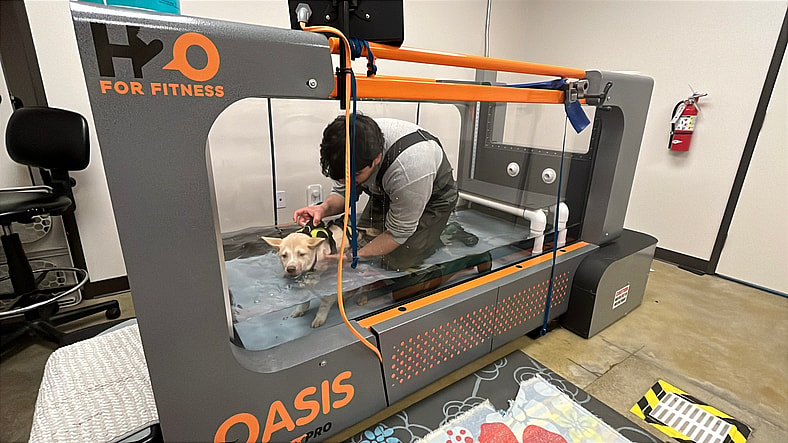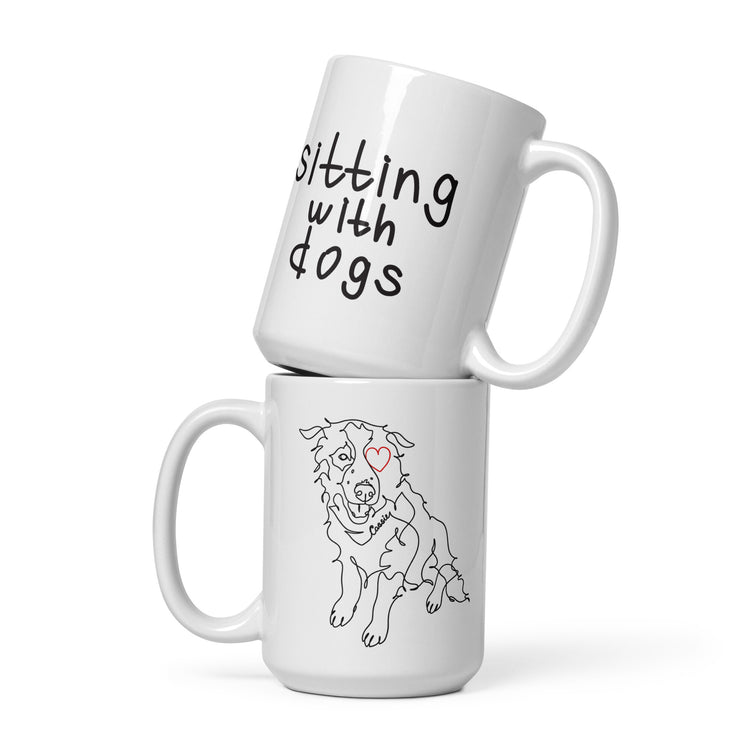Understanding Multiple Epiphyseal Dysplasia in Dogs: Lily & Katie’s Story
At Flip’s Farm, every rescue dog has a story—and some come with medical mysteries that take time to unravel. That was the case with Lily and her sister Katie, two husky-mix puppies who arrived unable to walk, their legs splayed out to the side, crawling across the floor like frogs. At first, we thought it might be swimmer syndrome. But as the weeks went by, it became clear something deeper was going on.
After multiple vet visits, X-rays, and consultations with specialists, we finally got an answer: Multiple Epiphyseal Dysplasia (MED), a rare and painful genetic condition that affects the way bones grow and joints form. It explained everything—their unusual gait, their fragile limbs, and why progress was so slow, even with therapy and round-the-clock care.
What Is Multiple Epiphyseal Dysplasia in Dogs?

Multiple epiphyseal dysplasia is a genetic skeletal disorder that affects the ends of growing bones—areas known as the epiphyses. These are the soft cartilage caps that eventually harden into solid bone, helping joints form correctly and allowing the body to grow. In dogs with MED, that process doesn’t go as planned. The cartilage doesn’t ossify normally, leading to joint instability, malformed limbs, and chronic pain.
Is multiple epiphyseal dysplasia a form of dwarfism? Yes—just like in humans, it can cause dogs to have short limbs, limited mobility, and stunted growth. But the condition varies widely. Some dogs live relatively active lives with mild symptoms. Others, like Katie, aren’t so lucky.
Katie’s Battle With MED
Katie’s case was severe—far more advanced than Lily’s. Her spine was curved, her hips malformed, and she was missing key bones in her legs and neck. Despite her spirit and the love she was finally getting, her body was in constant pain. After consulting with orthopedic specialists, it became clear there was no path forward that didn’t involve suffering.

Rocky made the difficult decision to help Katie cross the rainbow bridge, surrounded by love, comfort, and sunshine. In her final days, she got to roll in the grass, taste Nutella, and finally experience what it felt like to be cherished. Her passing hit us hard—but her life, however short, reminded us why we do what we do.
Lily’s Fight to Thrive
Lily shares the same diagnosis, but her multiple epiphyseal dysplasia symptoms are less severe. She still struggles with coordination. Her legs don’t move quite like they should, and she requires daily medication, careful physical therapy, and constant monitoring. But she’s walking. She’s playing. She’s even snuggling with Pippa and bossing Pumpkin around.

She can’t roughhouse the way a typical puppy might, and there’s no telling how her condition will progress. That’s the thing about multiple epiphyseal dysplasia—it looks a little different in every case. But here’s what we know: Lily is loved, she’s safe, and she’s going to get the best life we can give her for as long as she wants it.
What’s the Life Expectancy for Dogs with MED?
The multiple epiphyseal dysplasia life expectancy depends on the severity. In milder cases, with the right care, dogs can live full, happy lives. In more advanced cases, the pain and physical limitations may shorten their time. For Lily, we don’t know what the future holds—but we’ll let her tell us when it’s time.
Right now, Lily is thriving. She walks in the water tank for therapy, plays with toys, and follows Pumpkin around like a little sister learning all the naughty farm-dog tricks. She has her own bed, her own routine, and a whole crew of humans making sure she’s safe and comfortable.
A Rare Diagnosis—And a Rare Kind of Strength

This isn’t a condition you hear about often in dogs, and there’s still so much to learn. But what we do know is this: Lily is a fighter. Katie was, too. And by telling their story, we hope to shed light on this rare condition and remind the world that even medically complex dogs are worthy of love, comfort, and a chance to bloom.
If you’re rooting for Lily, stay tuned for more updates from the farm—and thank you for holding space in your heart for dogs like her and Katie. 💛
These Dogs Near You Need a Home
Adoptable Dogs Near You
FAQ
1. What is multiple epiphyseal dysplasia in dogs?
Multiple epiphyseal dysplasia (MED) is a rare genetic condition that affects the growth plates at the ends of bones. It prevents normal bone development, which can lead to malformed joints, short limbs, stiffness, and pain. In dogs, it often results in a wobbly walk, fatigue, and mobility challenges.
2. Is multiple epiphyseal dysplasia a form of dwarfism?
Yes. MED is considered a type of skeletal dysplasia that can cause a mild to moderate form of dwarfism. Affected dogs may have shorter legs or bodies and unusual limb development due to abnormal bone growth.
3. What are the symptoms of multiple epiphyseal dysplasia in dogs?
Symptoms can vary but often include:
-Delayed or unusual walking patterns
-Joint pain or stiffness
-Waddling gait or weakness in the limbs
-Short stature or misshapen legs
-Reduced energy or difficulty playing
In Lily’s case, she was unable to walk normally and relied on physical therapy to help build strength and coordination.
4. What is the life expectancy for a dog with multiple epiphyseal dysplasia?
There’s no one-size-fits-all answer. Life expectancy depends on the severity of the condition. Some dogs live relatively normal lives with proper care and management, while others—like Katie—may suffer from advanced deformities and pain that shorten their lifespan. Comfort, quality of life, and ongoing support are key.
5. Can dogs with multiple epiphyseal dysplasia be happy?
Absolutely. While they may need special care, dogs with MED can live joyful, love-filled lives. Lily may walk differently and require medication and therapy, but she’s playful, affectionate, and thriving at Flip’s Farm. It just takes a little extra patience—and a lot of love.



